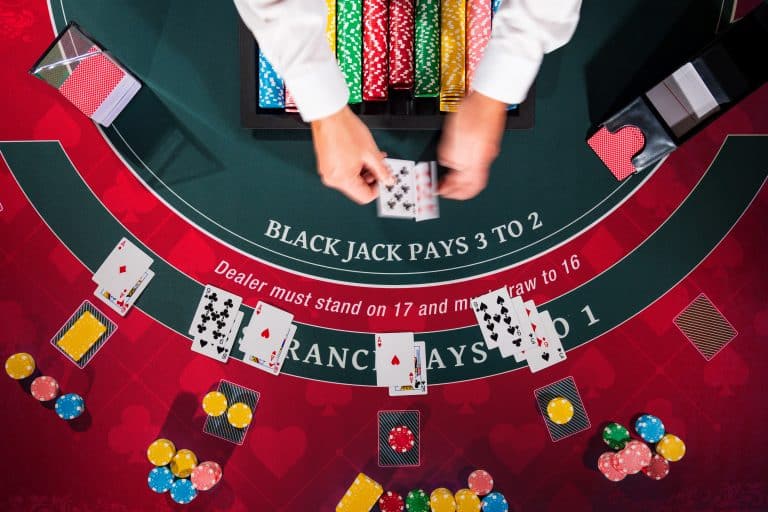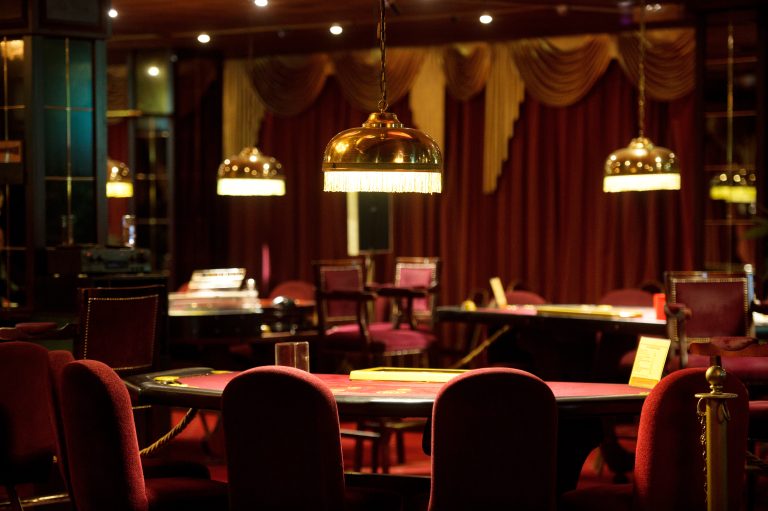In recent years, 21+3 Blackjack has gained popularity in the casino world as an exciting and dynamic variation of the classic game of Blackjack. It is a combination of two games, Blackjack and 3-card poker, creating a thrilling and unique gaming experience. If you’re new to the game, it’s important to understand the rules and basics of 21+3 Blackjack before you start playing.
In this blog post, we will take a closer look at the objectives of the game, the card values, the basic rules, the types of bets, and some tips for playing 21+3 Blackjack. Whether you’re a seasoned player or a beginner, this guide will help you understand the fundamentals of 21+3 Blackjack and improve your odds of winning.
Objectives of the game
The objective of 21+3 Blackjack is to beat the dealer’s hand by having a hand value that is higher than the dealer’s, but without going over 21. The game is played with a standard 52-card deck, and the card values are the same as in traditional Blackjack. The Ace can be worth 1 or 11 points, while face cards (King, Queen, and Jack) have a value of 10 points each. All other cards are worth their face value. Read more on how to use Ace to your advantage.
In addition to the main objective, the game also has a side bet, which involves the player’s two initial cards and the dealer’s face-up card. The side bet pays out if the player’s two cards and the dealer’s card form one of several poker hands, such as a flush, straight, or three-of-a-kind. The payout for the side bet can vary depending on the casino and the specific rules of the game, but it can offer an additional chance to win big.
Overall, the objective of the game is to have a higher hand value than the dealer’s, while also potentially winning a payout from the side bet. With its combination of Blackjack and poker, 21+3 Blackjack offers a unique and exciting gaming experience.
Card Values in 21+3 Blackjack
In 21+3 Blackjack, the card values are the same as in traditional Blackjack. Aces can be worth either 1 or 11 points, while face cards (King, Queen, and Jack) are worth 10 points each. All other cards are worth their face value (2-10).
In the side bet, the player’s two initial cards and the dealer’s face-up card are used to form a poker hand. In this case, the card values are slightly different. Aces are worth 1 point, while face cards are worth 10 points each. All other cards are worth their face value.
It’s important to keep the card values in mind when playing 21+3 Blackjack, as they determine the total value of the hand.

Basic Rules of 21+3 Blackjack
The basic rules of 21+3 Blackjack are similar to traditional Blackjack rules, with a few differences. Here are the key rules to keep in mind:
- The game is played with a standard 52-card deck.
- The player’s objective is to have a hand value that is higher than the dealer’s, but without going over 21.
- Players place their bets before the cards are dealt.
- Each player and the dealer receive two cards. The dealer’s first card is dealt face-down, while the second card is dealt face-up.
- Players can choose to “hit” (receive another card) or “stand” (keep their current hand) to try to get closer to 21.
- If a player’s hand exceeds 21, they “bust” and lose the game.
- After all players have completed their turns, the dealer reveals their face-down card and hits or stands based on a set of predetermined rules.
- If the dealer’s hand exceeds 21, they bust and all remaining players win.
- If the dealer’s hand is higher than a player’s, the player loses their bet.
- If a player’s hand is higher than the dealer’s and does not exceed 21, they win their bet.
- Payouts for a winning hand are usually 1:1, while a winning Blackjack hand typically pays out 3:2.
- In addition to the main bet, players can also place a side bet on whether their two initial cards and the dealer’s face-up card form a poker hand. The payout for the side bet varies depending on the casino and the specific rules of the game.
Overall, the basic rules of 21+3 Blackjack are simple and easy to understand. It makes it a popular game for players of all skill levels.
How to Play 21+3 Blackjack
Here are the basic steps for playing 21+3 Blackjack:
- Place your bets. Before the game begins, players place their bets. There is typically a minimum and maximum bet limit for each table.
- Receive your cards. Each player and the dealer receive two cards.
- Evaluate your hand. Evaluate the total value of your hand. Aces can be worth 1 or 11 points, while face cards are worth 10 points each. All other cards are worth their face value.
- Decide to hit or stand. Based on your hand value and the dealer’s face-up card, you can choose to “hit” (receive another card) or “stand” (keep your current hand).
- Continue playing. Players take turns hitting or standing until they are satisfied with their hand or exceed 21 (in which case, they “bust” and lose the game).
- Dealer’s turn. After all players have completed their turns, the dealer reveals their face-down card and hits or stands based on a set of predetermined rules.
- Determine the winner. If the dealer’s hand exceeds 21, they bust and all remaining players win. If the dealer’s hand is higher than a player’s, the player loses their bet. If a player’s hand is higher than the dealer’s and does not exceed 21, they win their bet.
- Side bet. In addition to the main bet, players can also place a side bet on whether their two initial cards and the dealer’s face-up card form a poker hand. The payout for the side bet varies depending on the casino and the specific rules of the game.
Overall, 21+3 Blackjack is a simple and fast-paced game that offers a unique twist on the traditional game of Blackjack. With its combination of Blackjack and poker, it offers an exciting gaming experience.
Types of Bets in 21+3 Blackjack
There are two types of bets in 21+3 Blackjack:
- Main bet: The main bet is the standard bet that is placed at the beginning of the game.
- Side bet: The side bet is an optional bet that is placed in addition to the main bet. It is based on the player’s two initial cards and the dealer’s face-up card. The objective of the side bet is to form a poker hand using these three cards. The side bet payout depends on the strength of the poker hand formed, and the specific payout ratios vary from casino to casino.
Here are some examples of the different types of poker hands and their respective payout ratios in 21+3 Blackjack:
- Suited Trips: This is a hand with three cards of the same rank and suit. The payout ratio for this hand is typically around 100:1.
- Straight Flush: This is a hand with three cards of the same suit in sequence. The payout ratio for this hand is typically around 40:1.
- Three of a Kind: This is a hand with three cards of the same rank. The payout ratio for this hand is typically around 30:1.
- Straight: This is a hand with three cards in sequence. The payout ratio for this hand is typically around 10:1.
- Flush: This is a hand with three cards of the same suit. The payout ratio for this hand is typically around 5:1.
Overall, the side bet in 21+3 Blackjack adds an extra element of excitement and strategy to the game. However, players should be aware that the odds of winning the side bet are typically lower than the main bet. That brings the importance of considering the risks before placing a side bet.
Conclusion
21+3 Blackjack is a fun and exciting game that combines elements of Blackjack and poker. It offers players the opportunity to place a side bet and win payouts based on the strength of their poker hand, in addition to the standard Blackjack gameplay. By understanding the basic rules, card values, and types of bets in 21+3 Blackjack, as well as avoiding some of the common mistakes, players can increase their chances of winning and maximize their overall gaming experience. Whether you are a seasoned Blackjack player or a newcomer to the game, 21+3 Blackjack is definitely worth trying out at your local casino or online gaming platform.






